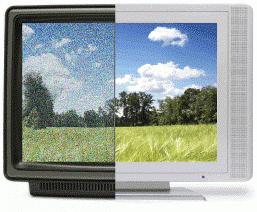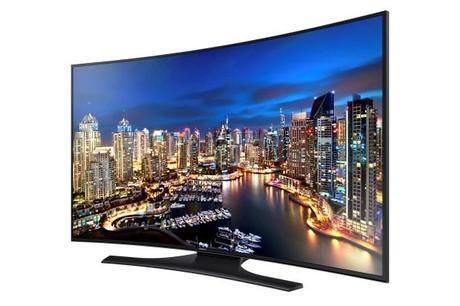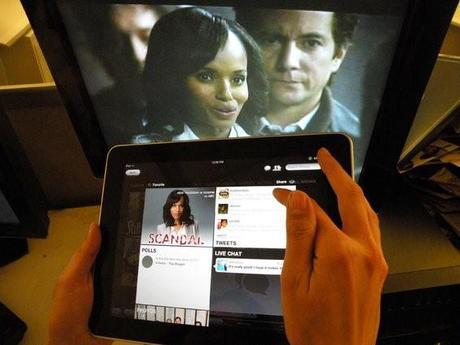The rapid advancement television technology has seen over the past decade is indicative of an increased desire for engagement, particularly immersive viewing experiences. As society moves to become more mobile in every sense, televisions have adapted to this trend in a multitude of ways. Broadcast has shifted from analog to digital, TV screens are sharper than imaginable and in no way limited to just flat screen on wall, and accessibility to shows is available anywhere there’s internet.

(Image Source: http://ubpost.mongolnews.mn/?p=6680)
Analog to Digital
A huge change was implemented in 2009 that made broadcasting digital-only versus analog. Analog technology, the original method of motion picture, transmits television programming over a continuous signal on radio frequencies through way of antennas. With the dated system of transmission, TVs were prone to fading, snow and ghosts. Enter digital TV – the transition paved the path to producing crystal-clear pictures, uninterrupted sound and the ability for stations to broadcast multiple channels. This development on the back-end execution of television directly pushed devices to become equipped to house digital TV. The old-school box was thrown out to make room for flat screens with high-definition resolutions along with mobile devices with video-streaming capabilities.
Screen Transformation
Seems like just yesterday flat-screen TVs were all the rage, now they are the norm, and then some. The intense pace of innovation has been exponential – flat screens, in all actuality, are a relatively new invention, only popularized in this millennium. But 2015 is bringing about ultra high definition flat screens like the 4K TV, which boasts image resolutions of 4,000 pixels wide by 1080 pixels high – providing extra engaging sharpness to viewers. These 4K TVs generated big sales in 2014 and the display technology wasn’t limited to only television sets – many mobile devices such as tablets and smart phones were equipped with 4K screens as well.

(Image Source: http://www.tomsguide.com/us/samsung-expands-uhd-tv-line,news-19040.html)
Looking towards the future, the momentum in screen technology is most definitely moving forward based on the introduction of 8K TVs for the home at January’s CES, the largest consumer electronics show in the world. Tech giants like Samsung have led the way in this type of television technology innovation as well as in the smart appliance space in order to keep up with the movement towards the “Internet of Things,” which is a larger concept that one day society, people and devices, will be completely connected by the internet. And it’s begun with connecting television to the internet.
TV via Internet
Cable providers are becoming increasingly obsolete due to the improved accessibility consumers have to the internet. Any movie, show, sports game or recorded moment can be virtually obtained so long as there is online connection. Television via internet has grown congruently with the massive implementation of mobile-friendly, WiFi-enabled gadgets like laptops, smart phones and tablets. Technology is quickly developing to support complex graphics TV shows and videos call for. Superior processors are now built into devices for extra smooth streaming and crystal clear sound, and paired with the aforementioned ultra-HD screen technology, the TV-watching experience is more real than ever before, and it doesn’t even necessarily have to be from the traditional TV console.

(Image Source: http://www.startribune.com/nation/150022035.html)
With the internet component, people are now able to engage in different ways. For example, they can comment in real-time about the content they view – whether it’s hashtagging to start a conversation, in an online chat room split-screened with the basketball game playing next to it, or tweeting in a question to a news anchor. The integration of internet and TV technology has opened up endless opportunities for people to connect.
Over the past 10 years, technological advancements have changed the way people receive television, view television and invest in what they’re watching. The improvements have created an extremely immersive platform that allows consumers to emotionally and socially connect, ultimately bringing people together via technology.
